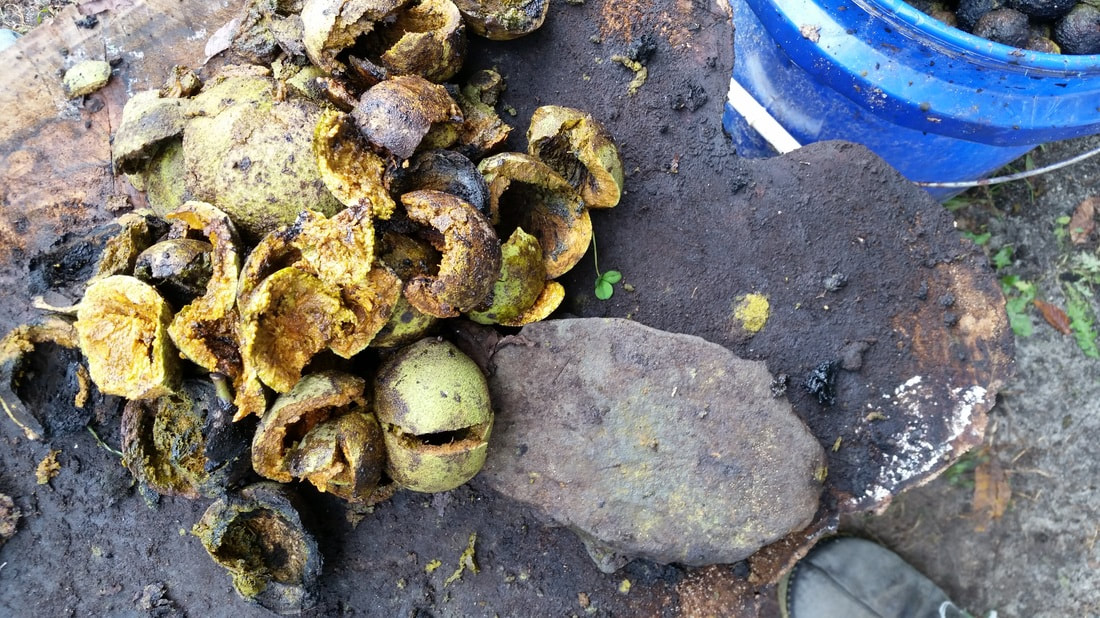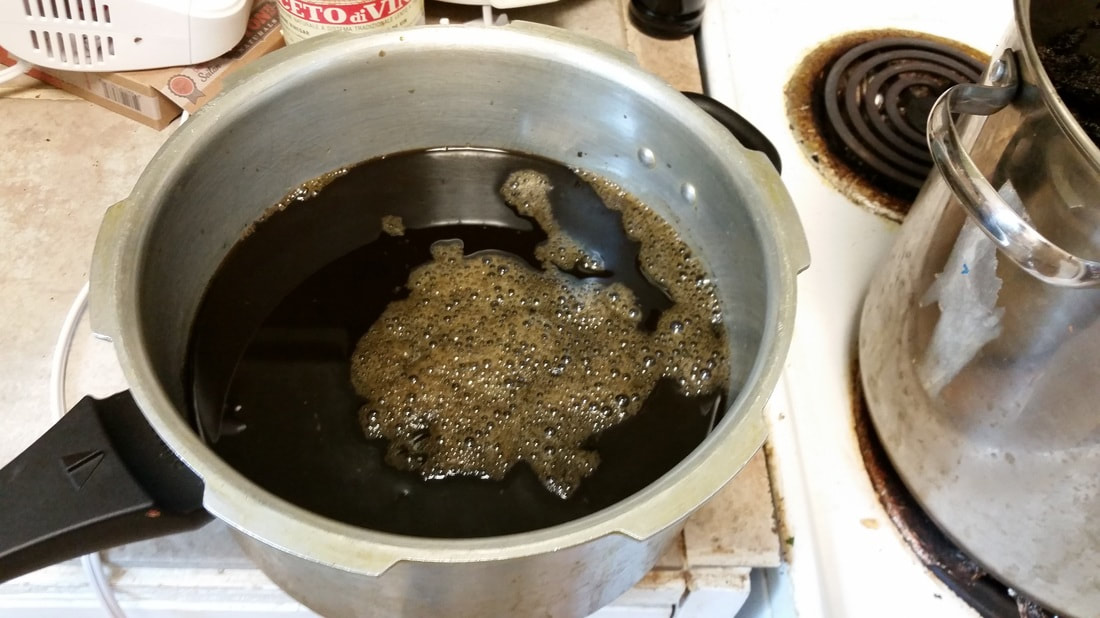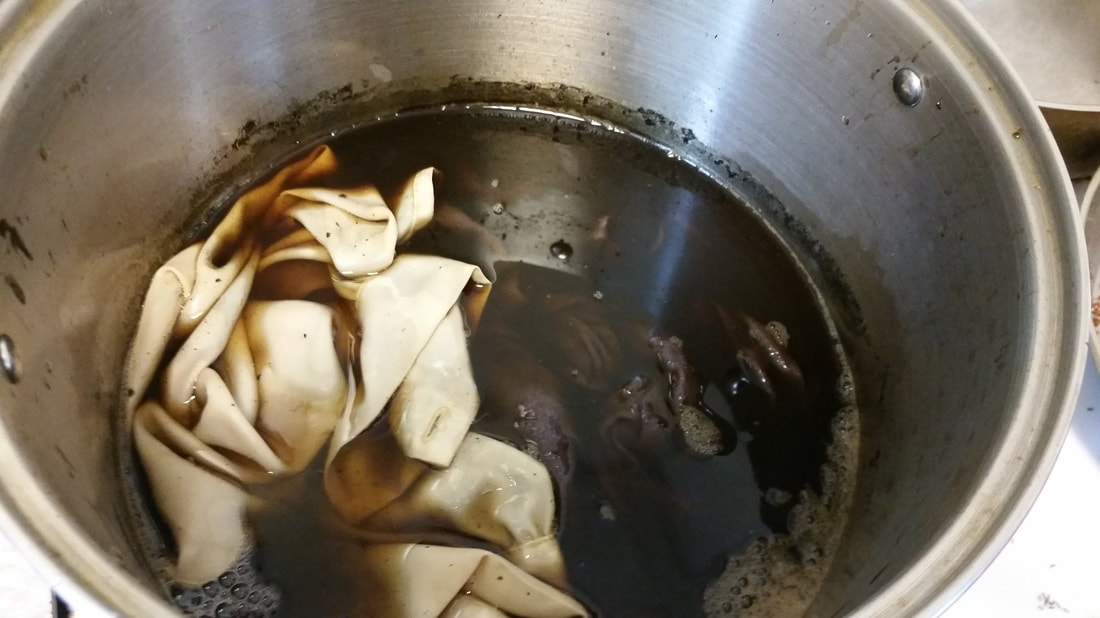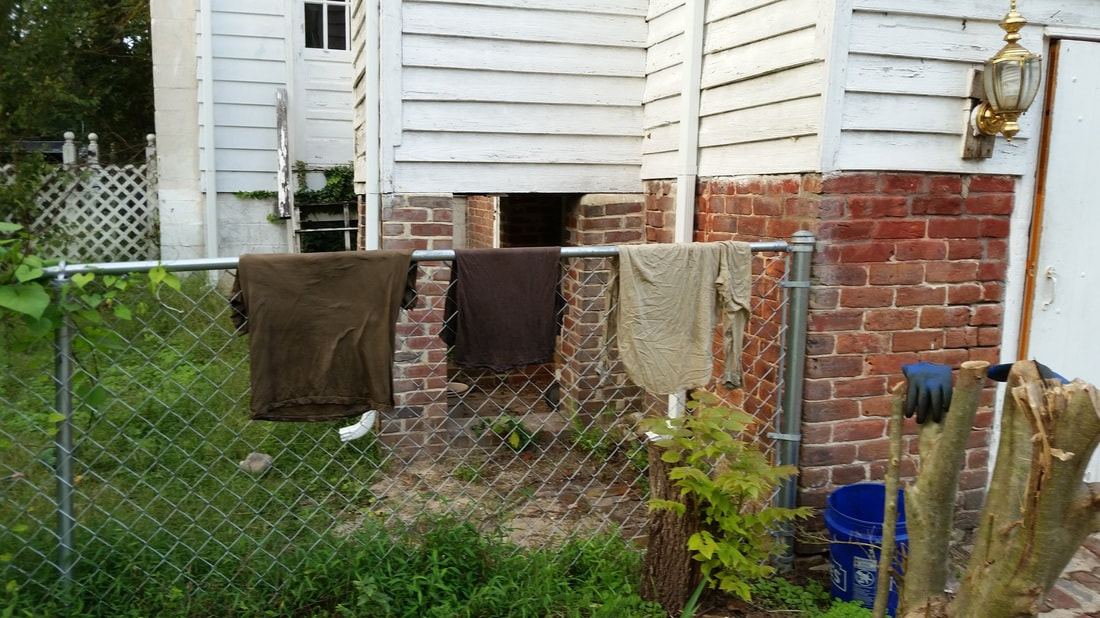|
The by-product of black walnut harvesting is a lot of green hulls which quickly turn brown and then black as they sit. Walnut hulls have been used since ancient times to dye yarn, fabric, clothing, textiles, oriental rugs and many other things. Walnut husks were used in colonial times to create a variety of brown and black shade dyes. Using various mordants (like alum or cream of tartar) can help to deepen the color and vary the hue. We had a couple of pieces of old clothing which were stained or otherwise undesirable, which we have given new life by dyeing with the hulls from the walnuts we are processing. Work here restoring the buildings is hard and dirty and so clothes are quickly stained or worn out. Dyeing cloths is a good way to revive an old shirt, skirt or pair of pants. No need to throw away those old t-shirts or donate to the thrift store, and no need to buy something new. People are very wasteful today, but in older times people took advantage of the plants growing all around to reinvent old outfits and create a new look. We have used walnut for coloring Ayurvedic herbal oils also and believe it is a very useful substance. We are describing the process for those who are interested in natural dyeing and the use of native plants. Step One Black walnuts should be collected in the autumn as they fall from the trees. Quickly collecting the nuts is important to ensure that the nut meat will be fresh and the green hull free from worms and bugs. First the hulls must be removed from the walnuts. This can be done by hitting the nut with a hammer or a stone. Protective gloves should be worn and old clothing which you do not care about. All surfaces and materials used may get permanently stained. The black stain on the hands if glove are not worn may last for several weeks. The nuts in their shells are then rinsed of residual hull and dried for cracking or storing. Stored walnuts should be protected from squirrels who love walnuts and are often seen with black snouts in the autumn around here from their walnut foraging. For making dye, the hulls of about 12 to 16 black walnuts is needed. Step Two Next, the hulls must be crushed or torn into small pieces, ideally the size of peas. These are then placed in a non-reactive pot (like stainless steel or enamel). To this a gallon of water is added and the hulls are boiled for an hour or two. If you do not want to use your walnut hulls immediately, the pieces may be dried and powdered for storing for later use. Remember the importance of wearing gloves or washing the hands frequently during all stages of this process. Step Three Then the hulls are strained from the dark liquid and discarded. The liquid is returned to the pan for dyeing. Step Four Then clothing, yarn or fabric is added to the pot with the liquid and simmered until the desired shade is attained. This may take one or two hours or more depending on the color desired and the fabric. Some fabrics will not readily absorb the dye. We will address this in a future post. Stir the fabrics occasionally as they simmer to help be sure that they stay submerged and that all parts are colored evenly. Simmer until the desired color is attained. It is necessary to color fabrics a little darker than you want the finished color to appear, since some color will be lost in the rinsing stage. Step Five Remove the clothes from the dye liquid and rinse thoroughly in the sink, wringing out all excess liquid until the water runs clear. Then the fabric is hung to dry completely. If rinsing is not thorough enough, the clothes may stain the skin when worn or bleed and stain other clothes when washed. Step Six
Once dry, these clothes should be washed by themselves for the first time. After that, they can be washed with similar colored clothes as one normally does their wash.
0 Comments
Leave a Reply. |
Soma Matha BlogSharing news, articles, teachings, and events. Archives
September 2023
Categories |












 RSS Feed
RSS Feed